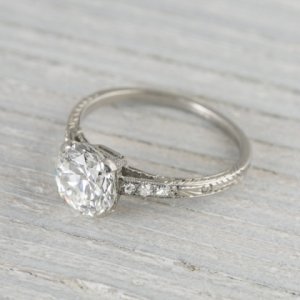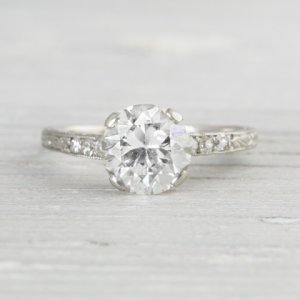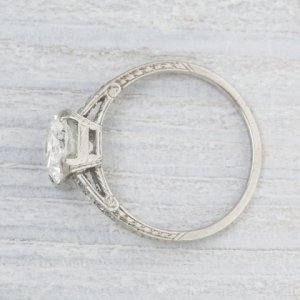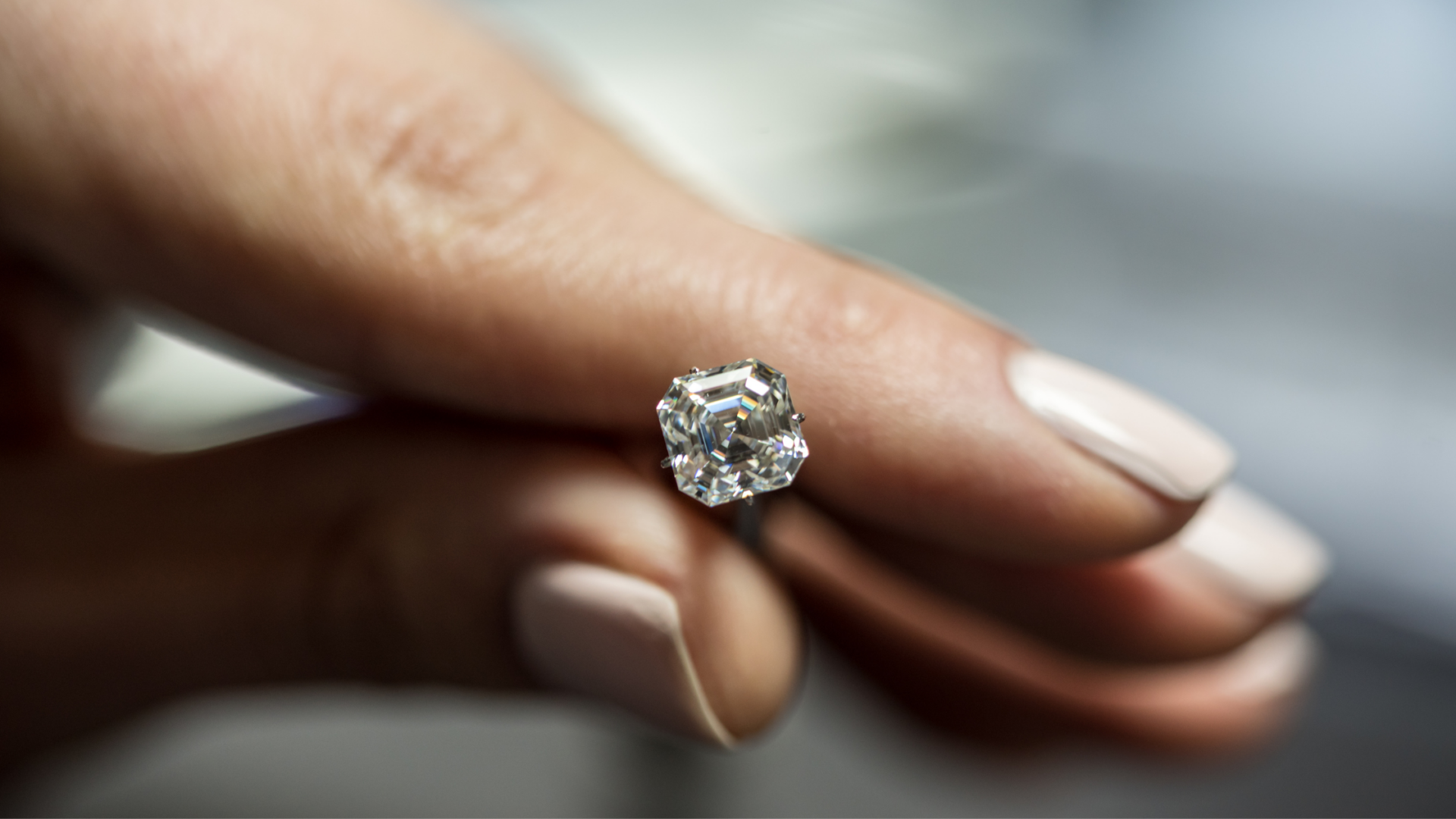All,
I brought my fiancee's engagement ring in for appraising today for insurance purposes and the appraiser told me something very different from the jeweler. My fiancee loves the ring, but I now I have questions about what exactly I bought and who is telling the truth.
I'm also a bit concerned because most of the time people seem to get appraisals that are much higher than they paid for the ring -- this appraisal is for only $130 more than I paid for the ring. If I hadn't negotiated the price down, or if I'd paid sales tax (out of state purchase), it would have appraised for significantly less than I paid.
I'm curious to hear what people think. Is this a transitional or OEC? Should I go for another appraisal or just suspect that I propably overpaid?
Any input you can provide would be greatly appreciated!
Jeweler:
Says ring is from 1920s; diamond is OEC also from 1920s.
Appraiser:
Says ring may be from 1920s, diamond is transitional and closer to 1940-60s. Suggested that the diamond may have been re-cut after damage.
To be fair, the jeweler specializes in antique jewelry and the appraiser doesn't.
The diamond is GIA certified:
ROUND BRILLIANT
Measurements 7.30 - 7.47 x 4.62 mm
Carat Weight 1.55 carat
Color Grade I
Clarity Grade VVS2
Cut Grade Fair
PROPORTIONS
Depth 62.6 %
Table 59 %
Crown Angle 33.0°
Crown Height 13.0%
Pavilion Angle 43.8°
Pavilion Depth 46.5%
Star Length 60%
Lower Half 65%
Girdle Very Thin to Slightly Thick, 3.0%
Culet Medium
FINISH
Polish Good
Symmetry Fair
FLUORESCENCE
Fluorescence None
CLARITY CHARACTERISTICS
Clarity Characteristics Needle, Cavity, Feather, Extra Facet, Pinpoint



I brought my fiancee's engagement ring in for appraising today for insurance purposes and the appraiser told me something very different from the jeweler. My fiancee loves the ring, but I now I have questions about what exactly I bought and who is telling the truth.
I'm also a bit concerned because most of the time people seem to get appraisals that are much higher than they paid for the ring -- this appraisal is for only $130 more than I paid for the ring. If I hadn't negotiated the price down, or if I'd paid sales tax (out of state purchase), it would have appraised for significantly less than I paid.
I'm curious to hear what people think. Is this a transitional or OEC? Should I go for another appraisal or just suspect that I propably overpaid?
Any input you can provide would be greatly appreciated!
Jeweler:
Says ring is from 1920s; diamond is OEC also from 1920s.
Appraiser:
Says ring may be from 1920s, diamond is transitional and closer to 1940-60s. Suggested that the diamond may have been re-cut after damage.
To be fair, the jeweler specializes in antique jewelry and the appraiser doesn't.
The diamond is GIA certified:
ROUND BRILLIANT
Measurements 7.30 - 7.47 x 4.62 mm
Carat Weight 1.55 carat
Color Grade I
Clarity Grade VVS2
Cut Grade Fair
PROPORTIONS
Depth 62.6 %
Table 59 %
Crown Angle 33.0°
Crown Height 13.0%
Pavilion Angle 43.8°
Pavilion Depth 46.5%
Star Length 60%
Lower Half 65%
Girdle Very Thin to Slightly Thick, 3.0%
Culet Medium
FINISH
Polish Good
Symmetry Fair
FLUORESCENCE
Fluorescence None
CLARITY CHARACTERISTICS
Clarity Characteristics Needle, Cavity, Feather, Extra Facet, Pinpoint







300x240.png)